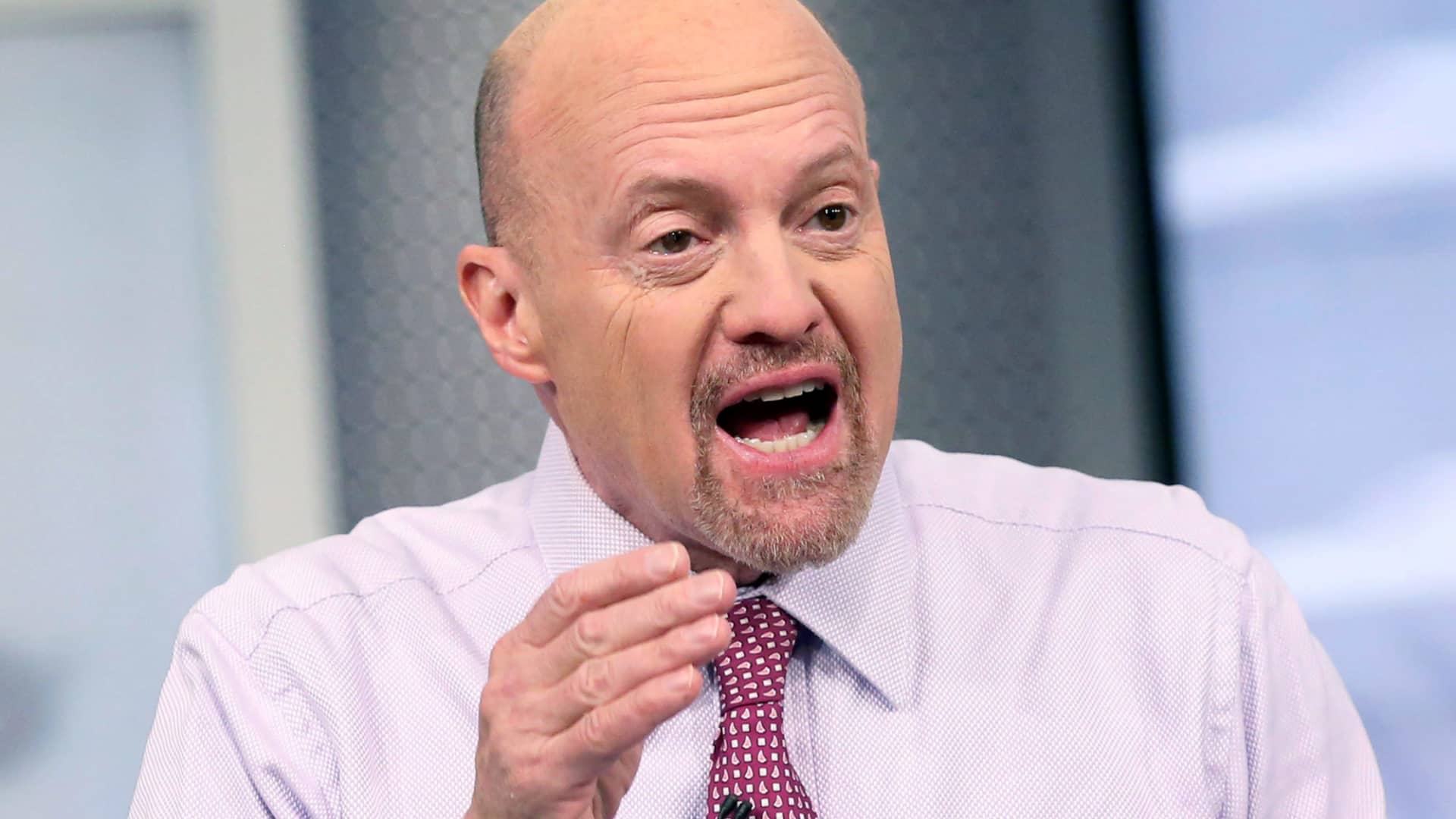The State of Social Media in 2023: How You Can Build Communities, Drive Sales, and Go Viral, According to 1,000+ Social Media Managers
There's no two ways around it: Social media is hard.

There's no two ways around it: Social media is hard. Nowadays, social media marketers are inundated daily with information on evolving trends, social platforms that are gaining or losing steam, and new types of content. It can be hard to keep track. As a social media marketer, you might be asking yourself: To help you identify which trends matter most to your business, and how you can shape your social strategy accordingly, HubSpot Blog Research polled 1,000+ social media marketers globally to learn the biggest trends, challenges, and opportunities of social in 2023. You'll also hear from social media experts at G2, Dropbox, Vimeo, Aircall, Rakuten Advertising, HubSpot, and more on how you can effectively engage audiences, cultivate communities, and drive revenue on social in 2023. Keep reading, or skip to the section(s) that pertain to you: To start, let's go over some of the biggest trends social media marketers will see in 2023, and how to shift your strategies accordingly. A whopping 90% of social media marketers say building an active online community is crucial to a successful social media strategy in 2023. Social media communities enable your followers to engage and learn from each other — which helps them perceive your brand as even more valuable. Think of it like this: You know that one friend who is a "connector"? That friend who is the best party host, and goes out of her way to facilitate interesting conversations and forge deep connections with everyone around her? By cultivating social media communities, your brand can be that person — the "connector" for your prospects and customers. And that's a brand worth investing in. Back in 2020, HubSpot launched a private Facebook Group, Marketer to Marketer. With just 2,000 followers, the group is much smaller than HubSpot's Facebook Page. But it allows for unique conversations. As former HubSpot Social Media Community Manager Krystal Wu puts it, "The HubSpot Group gives us a more direct way to interact with a more engaged audience. The Group content gets preferential placement in followers’ news feeds, whereas our normal Page content is a different content angle ... In short, we consider our Group followers as our VIPs." Wu adds, "The Facebook Group also gives our members an outlet for more niched conversations, providing security and privacy to open up about any struggles, techniques, opportunities, or new information they’ve discovered about their industry." When was the last time you bought something on Instagram or TikTok? If you're anything like me, I bet it was recently. And you're not alone. 25% of social media users age 18-44 have bought a product on a social app in the past three months, and social is the preferred product discovery platform for consumers age 18-44. Perhaps what is most shocking is that 80% of social media marketers believe consumers will buy products directly in social apps more often than on brands' websites or third-party websites, like Amazon, in 2023. All of which is to say: If you work in the e-commerce or B2C space, you'll want to ensure you've launched shopping capabilities on your social platforms so your consumers can purchase your products where and when it's most convenient for them. The biggest inhibitor to social shopping is a lack of trust — only 42% of social users feel comfortable making purchases on social media platforms, and a mere 21% report the products they purchase in-app are high-quality. To build trust with your social audiences, you'll want to: Or click here to listen to HubSpot Podcast Networks' 2023 Social Media Trends playlist, or save for later. In prior years, it's been tempting to simply post a message or video to one platform, and copy-and-paste it to another. But social media platforms don't reward re-posted content — and your audiences likely won't prefer it, either. Fortunately, that doesn't mean you need to make brand-new content for each platform. You can use the same foundational content for each platform as long as you tailor the tone, language, and visuals for each social channel. 48% of social media marketers do just that — sharing similar content across platforms with some tweaks. Another 34% make unique content from scratch for each platform, and just 17% continue to share the exact same content across platforms. Click play above, or use this link to access HubSpot YouTube channel's complete social media strategies playlist. Mat Cruz, HubSpot Social Team's Community Management & Growth Specialist, believes reposting can be a good idea, but only when properly executed. As he puts it, "When creating content, especially with limited resources, it's important we are using our time and effort efficiently. Still, having a brand in today’s social media landscape often means being on multiple platforms to reach various audience segments. With wanting to offer all of them content, reposting seems like a fair solution, but like every business decision, the “right” choice for you comes from weighing your team’s goals against the pros and cons." He adds, "In short, reposting content across channels can be a great way to spread valuable information while also lightening the production load, but it requires thoughtful execution to truly resonate and add value." If you're considering reposting content, Cruz recommends you consider some of these questions to better inform your decision: Cruz says, "If reposting content is going to be something you are incorporating into your strategy, make that decision from the start. The more consideration there is in ideation and production to fit various platform needs, the fewer 'tweaks' you’ll have to make. Think of it similarly to the idea of 'measure twice, cut once'. A piece of copy for LinkedIn reposted on Twitter could have very few tweaks if done well." Cruz adds, "Overall, reposting can be a tool to work smarter, not harder. Still, one must be reminded it should always be seen as a tool, not a crutch. In the end, great content can carry itself when created with strong strategy and care." When I hear about a new interesting brand, I don't start with Google anymore: I start with Instagram. Perusing their social profiles helps me get a clearer and more authentic sense on their mission and products. And I'm not alone — 36% of Gen Z and 22% of millennials prefer to search for brands on social media more often than through search engines. This means, while SEO is still a critical component of any marketing strategy, having a social presence is increasingly vital, too. People use social media nowadays to search for content that is interesting and inspirational, as well as to find people, products/services, and brands. Here are three top strategies used by social media marketers to optimize your social media accounts for social search: Consider this: The last time you scrolled through your social feeds, what made you stop? For many, the answer is simple: When something seemed funny or made them laugh. In 2023, many social media marketers might struggle to identify the type(s) of content that performs best with their audiences — which is why we asked over one thousand social media marketers globally what type of content they post most often. 45% of social media marketers most often post content that reflects their brand values; that's followed by relatable content (42%), educational (39%), trendy (39%), and funny content (36%). However, when asked which type of content is most effective, 66% of social media marketers reported funny content to be the most effective for their brand — followed by relatable content (63%), and trendy content (59%). Consider, for instance, brands like Chipotle, which currently has over 2 million followers on Chipotle's TikTok thanks to its dedication to creating the type of content TikTok audiences crave: Short, funny, engaging clips, like the one below: Of course, you don't want to adopt a tone or persona that doesn't fit your brand voice. If your brand voice is more serious, you don't want to start telling random jokes that don't align with the rest of your content. However, you might be able to find subtle ways to inject humor or lightness into your social content. But, most importantly, it's critical you remain authentic to your tone and your audience when creating content. Every year, we survey social media marketers to figure out what time(s) they find most effective for posting on each social platform — and each year, their answers change slightly. The best times to post on social media in general, across all industries and platforms, are 6 PM to 9 PM and 12 PM to 3 PM. And Friday is the best day to post. This makes sense. Between 6 PM to 9 PM, many social users are done working, and looking for a chance to re-charge or wind down with interesting, engaging content. And anywhere between noon to 3 PM is typically when you hit a lull in your workday. While some might use that as an opportunity to take a walk or eat lunch, others might spend a few minutes scrolling on social before returning to work. We also collected the best times to post on each individual channel: To fully explore this data — along with the worst times to post for each channel — take a look at the full post here. In general, of course, you still want to do whats best for your audience. You can use your own social analytics to uncover which days and times got the most engagement on your platform. It's important to test and iterate when it comes to your own personal audience. Next, let's explore the social platforms on which marketing execs can expect to see the highest ROI, plus some big-picture strategy intel (like whether you should hire content creators) to help marketing execs successfully lead a social team. If you're a marketing leader wondering where to invest your budget, time, and resources in 2023, it's imperative you consider influencer marketing. Influencer marketing has proven to be one of the most effective strategies for social media marketers. However, over the past year, we've seen a major shift among social professionals towards micro-influencers. In fact, 80% of influencer marketers work with smaller creators and influencers with under 100K followers, and just 16% work with celebrities who have over one million followers. Micro-influencers are less expensive, so it's easier to work with them long-term. Equally importantly, micro-influencers have tight-knit, niche, loyal communities, and can be seen as more trustworthy compared to celebrities. Plus, 37% of social media marketers say micro-influencers see higher engagement with their content. If you're a marketing or social media leader wondering where to invest most of your time or energy to get the highest return-on-investment, Instagram is a strong contender to consider. Out of all social platforms, Instagram takes the winner's spot for ROI and engagement, and social media professionals predict it will see the most growth in 2023. Social media marketers also believe that Instagram has the most accurate algorithm, and the best potential for brands to grow their audiences. In fact, 29% of social media marketers plan to invest the most in Instagram over any other platform and 52% plan to increase their investment in the platform in 2023, while another 39% will keep it the same. When asked which platform social media marketers plan to invest the most in for 2023, the majority said Instagram — that's followed by Facebook (23%), YouTube (14%), and TikTok (14%). If you're unsure how to measure social media ROI, you're in luck — I spoke with social media experts at G2 and Dropbox to explore the best ways for brands to effectively measure ROI in this post. With 76% of social media marketers already offering customer service on social, it's a good idea to consider it for your own strategy in 2023. Many social users already expect to be able to communicate with brands via social when it comes to their customer service queries. One in five Gen Z, millennial, and Gen X users have contacted a brand through DM for customer service in the past three months alone. You might even consider creating a separate channel for customer service, like Wix did with its Wix Help Twitter account, so users know where to go to get their questions or concerns resolved. Check out our status page to stay up to date on the availability of all Wix products, in real time > https://t.co/6G4dNMpztl If you have any questions or need further assistance please send us a tweet or direct message and we'll be happy to help. Leveraging social media for customer service can help you meet your customers where they're at on the channels they prefer. It can also help you minimize the amount of requests you get on a given topic: If you're able to post an answer to a commonly-asked question to your entire community through social media, then they don't need to reach out to a representative. Which leads us to the next question: Who is answering those DMs? 43% of companies that offer customer service through DMs have a customer service rep respond to the messages — but 41% leave it up to the marketer who is in charge of that platform. Another 13% use automated tools like chatbots. I spoke with Julie Fernandez, Aircall's Global Senior Communications Manager, to learn how her team approaches social media as a customer service channel. Fernandez told me, "When it comes to customer support, we see social media platforms as a huge opportunity to proactively communicate with prospects and customers alike, whether it be Twitter, LinkedIn, Instagram, or Facebook." In terms of best practices when it comes to customer support on social media, Fernandez advises, "We carefully monitor our mentions, and if we notice someone needs help or is experiencing an outage, we respond as quickly as possible and connect them with our support team directly. We want to make sure they receive the best quality support, and we find that when our team can talk about the issue over the phone, it's far more impactful than going back and forth over social media or using a text-based channel like chat or email." She adds, "We also monitor relevant feeds to see organic opportunities for Aircall to share product information, answer product questions, participate in industry conversations, and celebrate our partners." She also encourages brands to consider whether creating a community can help you facilitate conversations that help your prospects and customers grow. As she puts it, "Would it make sense to start a community of your own? If you notice an opportunity to create a shared space, it could pay off in a positive way for your brand and even your product as a whole." If you're willing to invest in leveraging social media as a customer service platform, you'll want to ensure you have the resources, time, and tools required to create a streamlined, efficient process for both your customers and your employees. If you're a creator looking to work with a brand in 2023, you'll want to consider the factors that matter most to those looking to hire. Most importantly, influencer marketers want to see you can create high-quality social content. Additionally, influencer marketers are concerned with your follower/subscriber count, and whether you align with their company's values. One of the biggest factors is your authenticity as a creator. As Joseph told Santiago, "Authenticity is key. Authenticity builds trust, so when a creator brings their full selves to their content, their audience trusts them. This is important for a brand looking to run advertisements within the creator’s content. If the audience trusts the creator, they will be more likely to trust the creator’s recommendations." Additionally, when working with businesses, you'll need to think like a business leader and come prepared with a results-driven approach. Huang says, "I take a close look at all the quantitative metrics that I can regarding a creator: their reach, their engagement, how consistent they are with posting, and how consistent the results are on the content they create." If you're interested in becoming an influencer, it can be helpful to know which industries are most popular for hiring influencers. Influencer marketers work with influencers/creators in fashion (41%) the most, followed by lifestyle/vlog (40%), fitness/health (37%), food (34%), travel (33%), and family (33%). Of course, you'll want to choose an industry that excites you. If you're not passionate about the topic at-hand, it won't resonate well with your audience. Plus, it will be difficult for you to create content long-term on a topic you don't find interesting. It's important to know which platform(s) are most preferred by influencer marketers if you hope to work with businesses in 2023. As far as platforms, influencer marketers see the highest ROI through Instagram, with YouTube and Facebook tied for #2. These are also the three most popular platforms for influencer marketing. If you're interested in working with brands, then, it's critical you can demonstrate success on Instagram in particular. Knowing how to create high-quality content that performs well with Instagram's algorithm is vital. Understanding trends related to social is imperative for the success of your social strategy because social media users' preferences and expectations change — fast. Hopefully, this page gives you a leg-up on your competition and helps you identify the biggest opportunities for growth when it comes to your social accounts in 2023. Ultimately, social media is one of the most powerful opportunities for you to connect directly with your prospects and customers. It also enables you to build strong communities and increase brand value and loyalty. But there's no 'quick fix' to social. It takes time, resources, and intention to reach and resonate with audiences. For a more comprehensive list of the data points we collected, read HubSpot's 2023 Social Media Marketing Report [Data from 1000+ Global Marketers]. For the full Social Media Trends in 2023 report, check back on March 3, 2023. Important Findings & Takeaways for Social Media Marketers
1. Social media communities will be critical for increasing engagement.
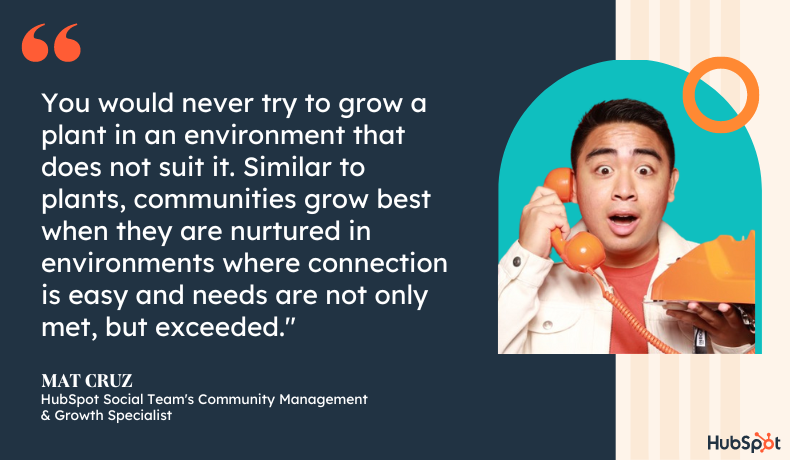 (Hear more from Mat Cruz and other experts by reading How These 6 Social Media Marketers & Creators Built Loyal Brand Communities.)
(Hear more from Mat Cruz and other experts by reading How These 6 Social Media Marketers & Creators Built Loyal Brand Communities.)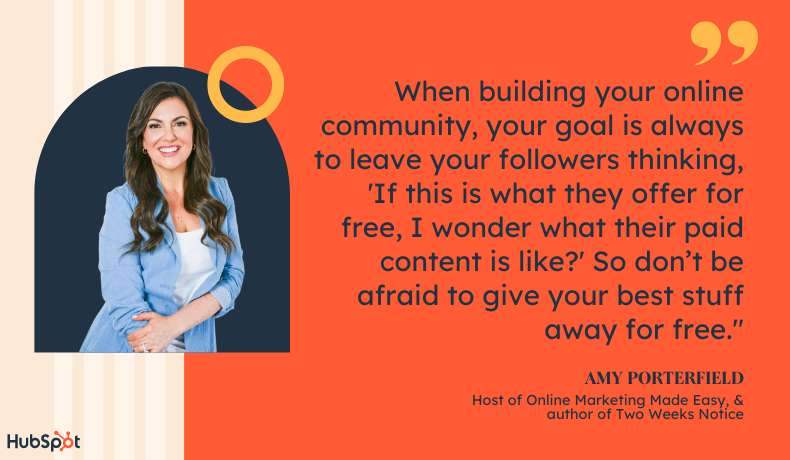 (Hear more from Amy Porterfield and other experts by reading How These 6 Social Media Marketers & Creators Built Loyal Brand Communities.)
(Hear more from Amy Porterfield and other experts by reading How These 6 Social Media Marketers & Creators Built Loyal Brand Communities.)Corresponding Content:
Are Brands Investing in Social Media Communities in 2022? We Asked 1,000+ Marketers
How These 6 Social Media Marketers & Creators Built Loyal Brand Communities
2. Amazon, watch out: Social media is becoming the preferred e-commerce platform for consumers.
Corresponding Content:
How 3 Companies Grew Revenue With Social Media Shopping Tools [New Data + Case Studies]
3. Re-sharing the same content across platforms won't fly in 2023.
Corresponding Content:
10 Social Media Trends Marketers Should Watch in 2023 [Data + Expert Tips]
4. SEO gives way to social search.
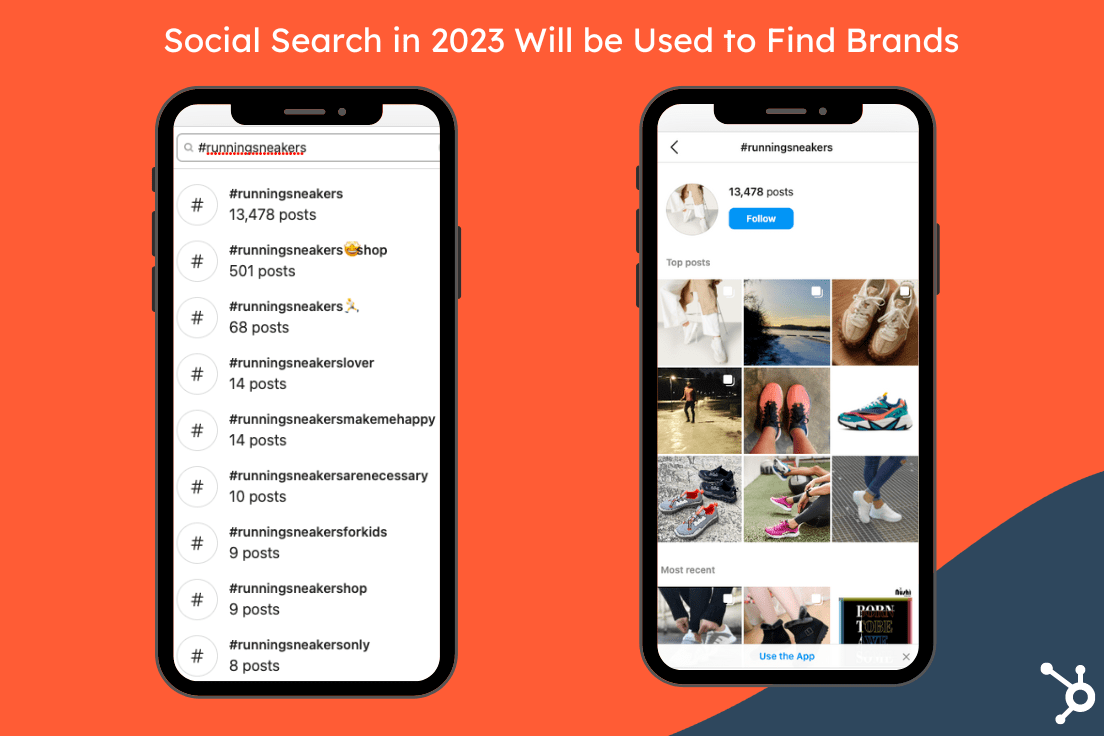
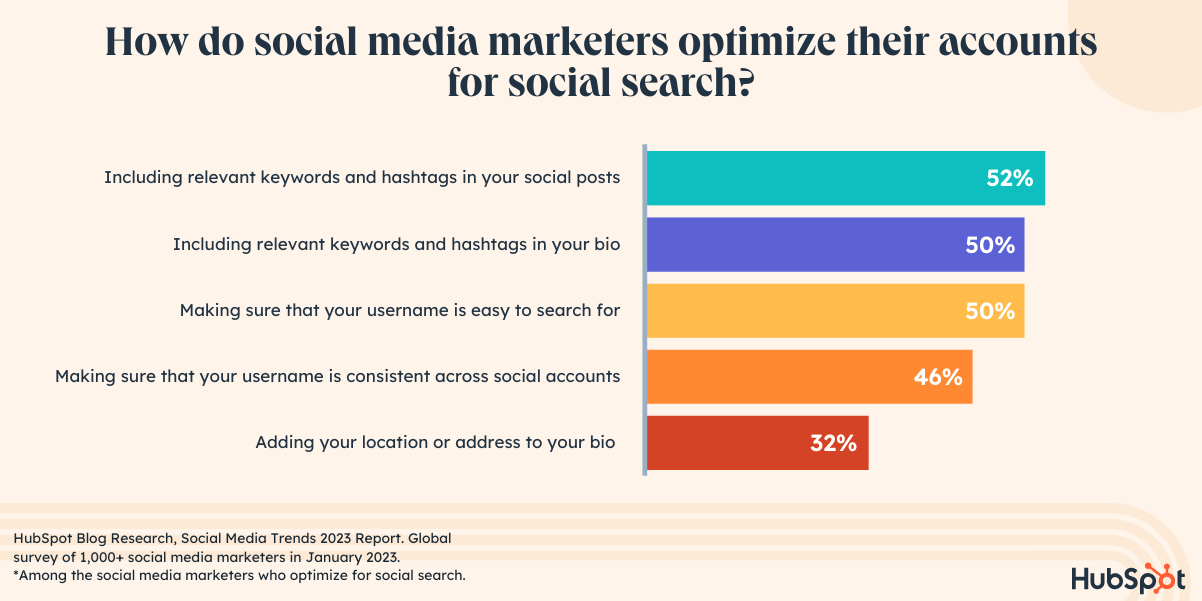
Corresponding Content:
8 Data-Backed Recommendations for Social Media Marketers in 2023 [Insights from 1,000+ Professionals]
5. Relatable and funny wins in terms of 'most memorable' type of content.
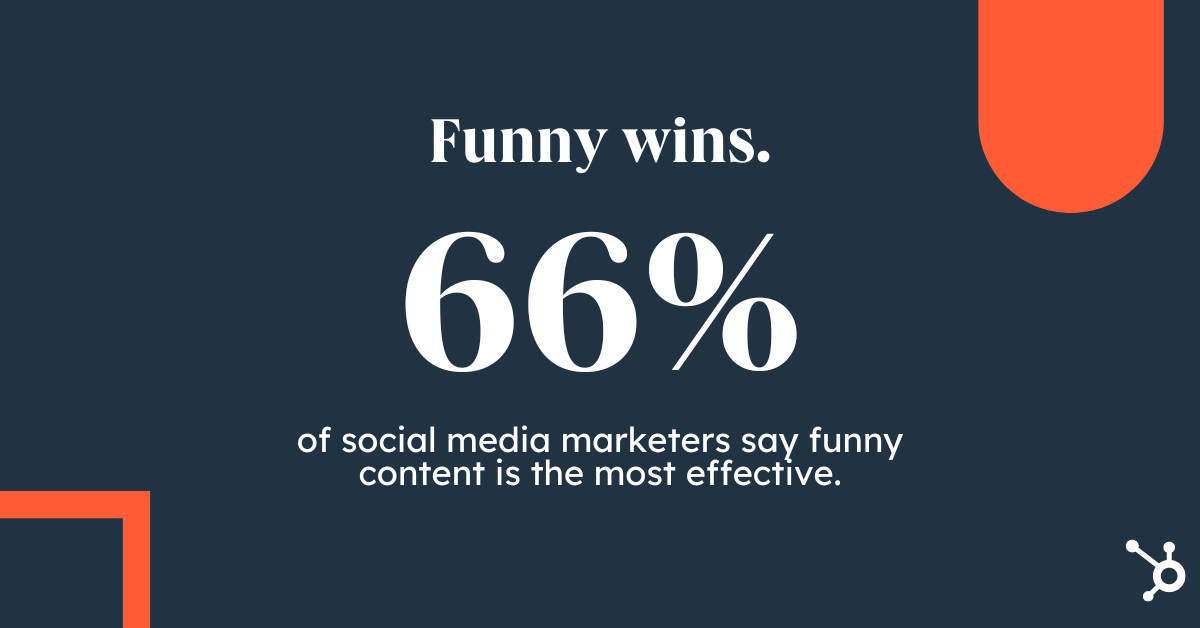 This is supported by our Consumer Trends report, as well, which found 49% of consumers reported funny content as being the most memorable, followed by relatable content as #2 (36%).
This is supported by our Consumer Trends report, as well, which found 49% of consumers reported funny content as being the most memorable, followed by relatable content as #2 (36%). Corresponding Content:
Social Media Platforms Marketers Should Watch in 2023
Which Social Media Channels are Gaining and Losing Steam? [New Consumer and Platform Data]
6. 6 PM to 9 PM, along with 12 PM to 3 PM, are the best times to post across social channels.
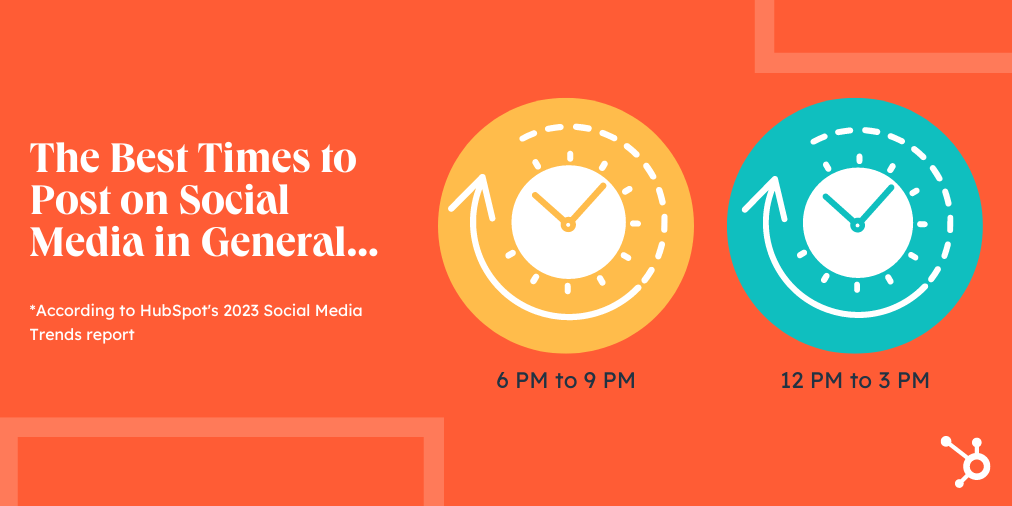
Corresponding Content:
The Best Times to Post on Social Media in 2023 [New Data]
22 LinkedIn Hacks That'll Make You More Productive
Will Marketers Continue to Use Twitter in 2023? [New Data]
Important Findings & Takeaways for Brands
1. Investing in micro-influencers is more effective than leveraging celebrities.
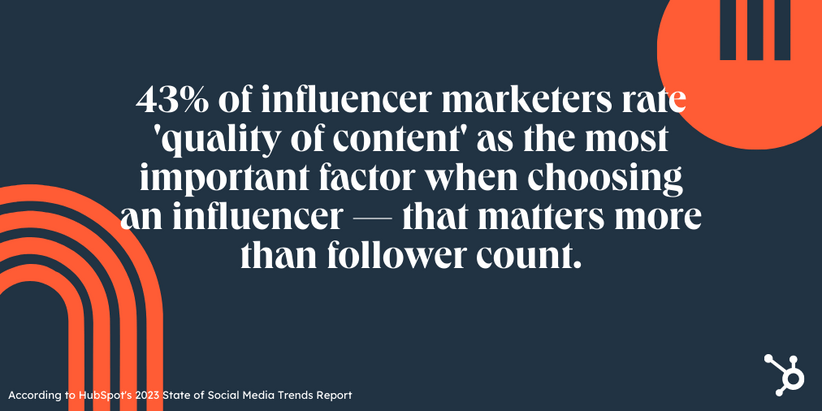 Social media marketers are placing big bets in 2023 on influencer marketing. In fact, a whopping 81% predict most companies will have a creator or influencer as the face of their brand in 2023, and 47% are increasing their investment in influencer marketing in 2023.
Social media marketers are placing big bets in 2023 on influencer marketing. In fact, a whopping 81% predict most companies will have a creator or influencer as the face of their brand in 2023, and 47% are increasing their investment in influencer marketing in 2023. Corresponding Content:
Influencer Marketing Stats to Know in 2023
2. Instagram can help you achieve the highest ROI out of any platform.
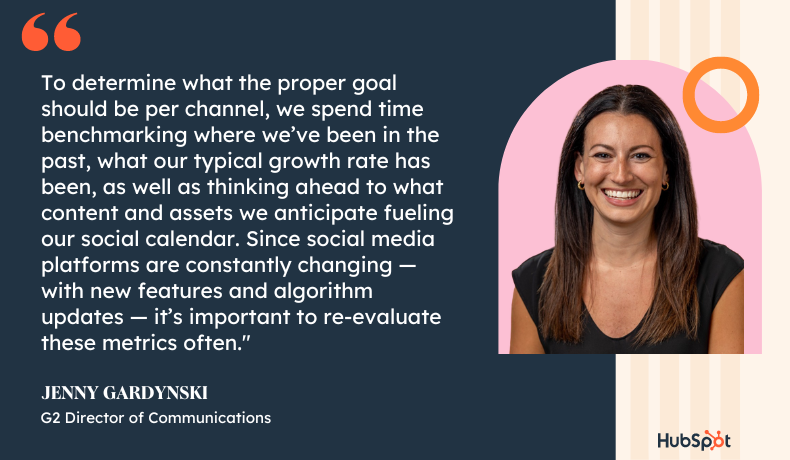 (Hear more from Jenny Gardynski and other experts by reading How to Measure Social Media Marketing ROI [with Expert Advice].)
(Hear more from Jenny Gardynski and other experts by reading How to Measure Social Media Marketing ROI [with Expert Advice].)Corresponding Content:
How to Measure Social Media Marketing ROI [with Expert Advice]
Which Channels See The Most Social Media ROI? [New Data + Expert Tips]
3. It's a good idea to create a customer service strategy on social.
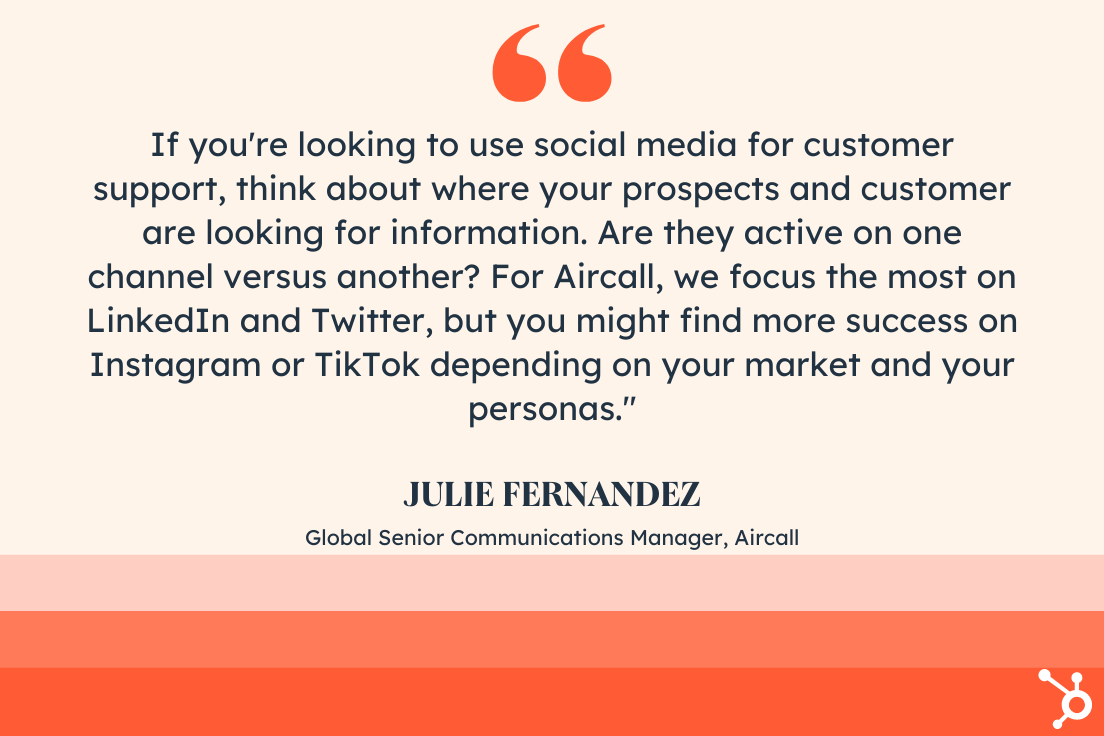
Corresponding Content:
Social Media Customer Service 101: The Beginner's Guide
Important Findings & Takeaways for Content Creators and Influencers
1. The quality of your content matters more than the amount of followers you have when it comes to getting hired.
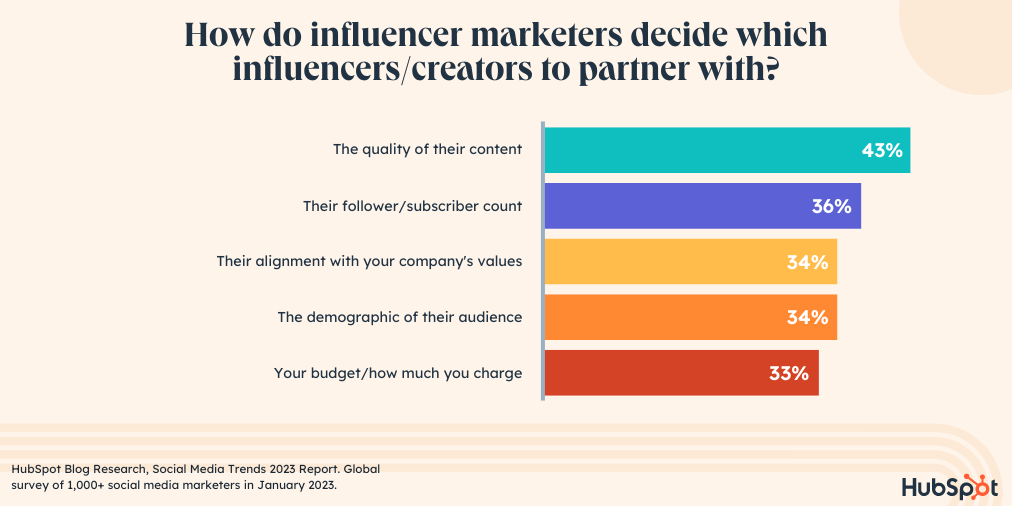 HubSpot's Creator program was launched in 2022, and HubSpot writer Erica Santiago spoke with HubSpot's Head of Creators Partnerships, Alanah Joseph, as well as Brandon Huang, Partnerships Lead for the Creators Program, to learn what they both look for when hiring creators.
HubSpot's Creator program was launched in 2022, and HubSpot writer Erica Santiago spoke with HubSpot's Head of Creators Partnerships, Alanah Joseph, as well as Brandon Huang, Partnerships Lead for the Creators Program, to learn what they both look for when hiring creators. Corresponding Content:
What to Look for When Hiring Creators, According to HubSpot Experts
2. The most popular influencer niches include fashion, lifestyle, and fitness/health.
3. Marketers prefer working with influencers on Instagram compared to other platforms.
Corresponding Content:
Influencer Marketing Strategy Checklist & Template
Social is Always Changing

 Hollif
Hollif ![The State of Social Media Trends [Free Report]](https://no-cache.hubspot.com/cta/default/53/3dc1dfd9-2cb4-4498-8c57-19dbb5671820.png)










![The State of Content Marketing in 2022 [Stats & Trends to Watch]](https://blog.hubspot.com/hubfs/state-content-marketing-infographic-2019.jpg#keepProtocol)
![How Your Audience Could Shift in Web 3 [Executive Insights + Podcast Episode]](https://blog.hubspot.com/hubfs/web-3-business-landscape.jpg#keepProtocol)

![What is a Media Mix & The Most Effective Types [HubSpot Blog Data]](https://blog.hubspot.com/hubfs/media-mix.jpg#keepProtocol)
















